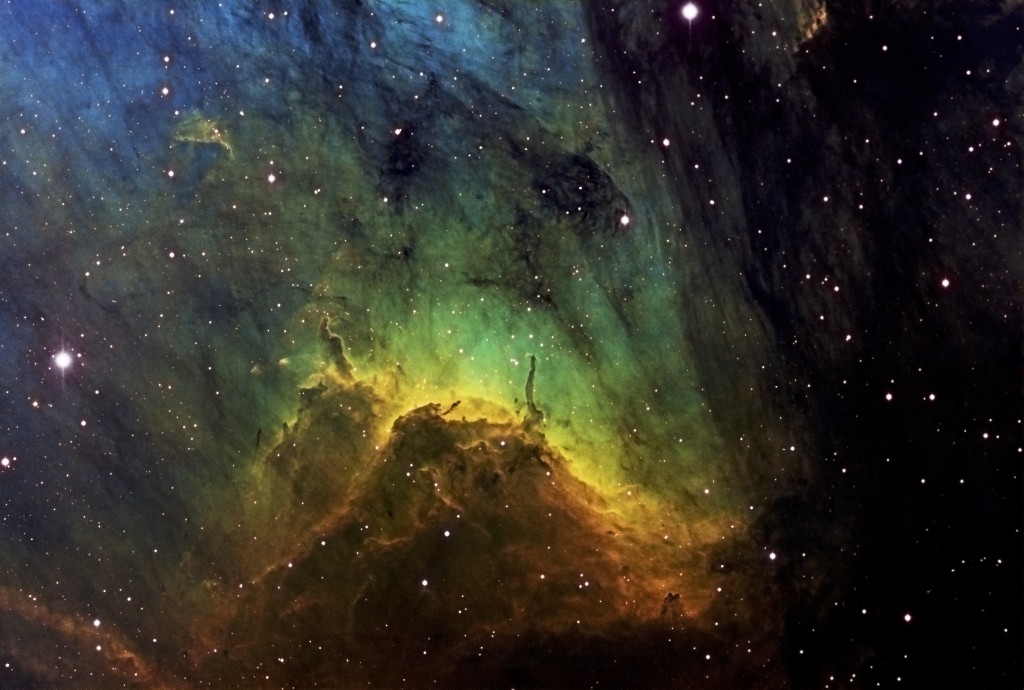The Pelican Nebula is large, low-density cloud of partially ionised gas associated with the North America Nebula in the constellation Cygnus. Light from young energetic stars is slowly transforming cold gas to hot and causing an ionisation front to advance outwards. Within the advancing front areas of dense cold gas can be seen to resist ionisation and survive as long pillars of dust and gas. Jets of hot gas ejected from the heads of some prominent pillars are also apparent in the image.
Right ascension: 20h 51m 17s | Declination: +44° 24′ 13″ | Distance: 2,000 Light Years
Field of view: 57 x 38 arcmin
Camera: SBIG ST-10XME
Telescope: William Optics Megrez 120 F/7.5
Guiding: Starlight Xpress Active Optics (SXV-AO-LF) unit
Filters: Baader Ha (7nm), OIII (8.5nm), SII (8nm)
Exposures: Ha 11 x 15 min; OIII 22 x 15 min; SII 30 x 15 min
Total exposure: 15.75 hours
Image composition: Colour Mapped Narrowband SII:Ha:OIII (Hubble Palette)
Scale: 1.56 arcsec/pixel
Image acquired: Over 10 nights in August through December 2012 from Bristol (UK)
Image capture with MaxIm DL, FocusMax, ACP; Image processed with MaxIm DL (Fat Tail Deconvolution), Photoshop CS4
